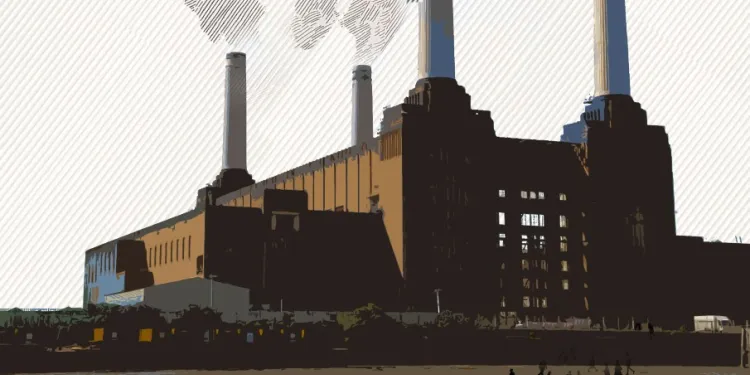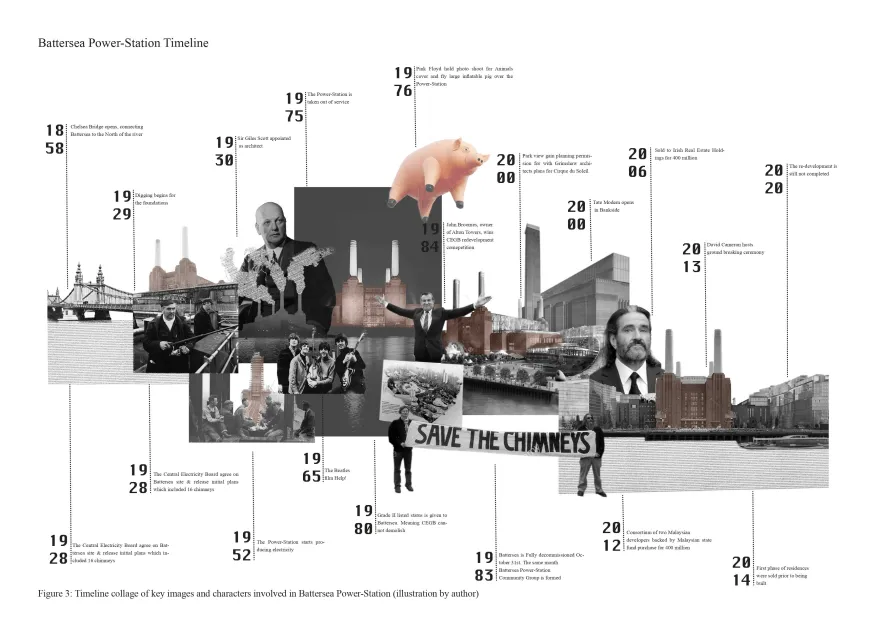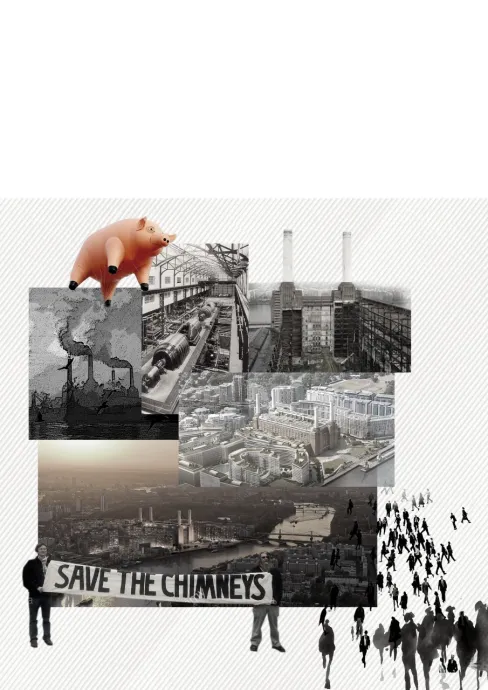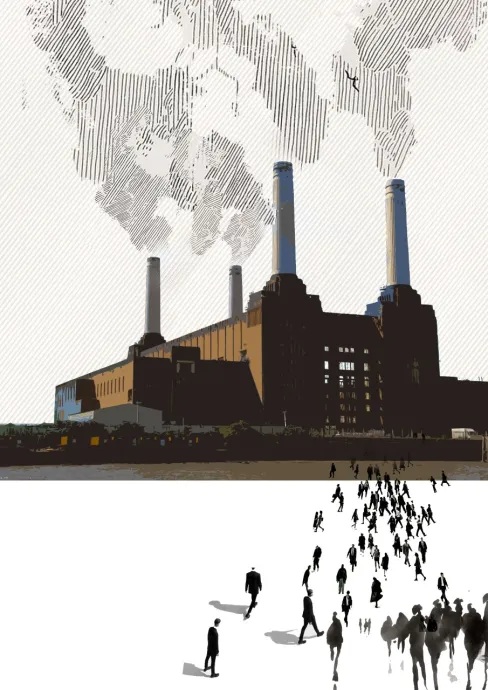Dissertation series: The community of Battersea in the shadows of an icon

Contrary to the opinion that dissertations can be boring and tedious, the students in this series use their final study as an opportunity to explore a subject close to their hearts. They prove dissertations can be a chance to delve deep into a topic that ignites your imagination.
Using ingenuity and creativity, these BA (Hons) Architecture students use their work to ask important questions and develop their own unique way of interpreting the world around them.
Here student Isobel Clancy investigates the effect of gentrification on vulnerable groups. Focusing in on the area of Wandsworth as her baseline, she explores the darker side to the gentrification of central London.
hide
hide title
Dissertation title:
The community of Battersea in the shadows of an icon: Battersea Power-Stations monumental status and the gentrification of Wandsworth
Author:
Isobel Clancy
As a design student, Battersea Power Station has always been a fascinating building, iconic both for its scale and as a symbol of London's industrial heritage.
My paper investigates the darker side of the gentrification of central London. I argue that the heavily gentrified capitalist development of Battersea has had a direct relation to the displacement of vulnerable groups within the Wandsworth community – through increased housing prices and streamlining of community services.
The borough of Wandsworth has transitioned from a working-class industrial neighbourhood to a predominantly gentrified middle-class area, similar to most inner-city London areas today.
My research for this paper has not been a linear process. Initially, I began exploring larger ideas such as industrial heritage and regeneration. But the more I researched, my scope naturally began to narrow. This lead me to the investigation of Battersea and the wider community of Wandsworth.
Due to our online learning setup as a result of the pandemic, I was unable to visit Battersea Power Station to attain primary sources and see the site itself. Instead, I utilised census data as well as local residents' interviews.
The addition of community voices enriched my argument. Personally, I felt consistent engagement with the dissertation module lead to my success with my final paper. Through this process I have enhanced my critical analysis skills, which has also been beneficial in my other course work.






